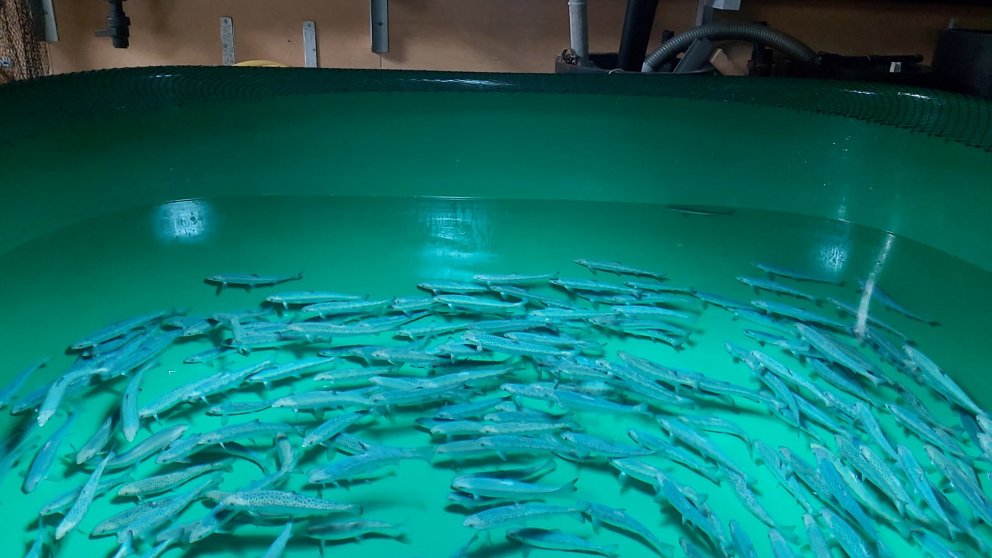- Research
- Fish tagging
- Lumpfish research
- Oceanography
- Seabed mapping
- Arnarfjörður
- Drekasvæði
- Ísafjarðardjúp
- Jökulbanki
- Jökuldjúp
- Kolbeinseyjarhryggur and adjacent area
- Kolluáll
- Langanesgrunn
- Látragrunn
- Nesdjúp
- Reykjaneshryggur and adjacent area
- Selvogsbanki
- South of Selvogsbanki
- South of Skeiðarárdjúp
- South of Skerjadjúp
- Southeast of Lónsdjúp
- Southwest of Jökuldjúp
- Suðausturmið
- Suðurdjúp
- Vesturdjúp
- East of Reykjaneshryggur
- Vestfjardarmid
- Seal research
- Whale Research
- Advice
- About
Salmon fed on wood
17. November 2020
The Marine & Freshwater Research Institute‘s aquaculture farm in Grindavík is now working on an experimental project for Matís, where salmon is bred on feed derived from wood.
The project is part of the Sylfeed project, an international four year project to convert wood residues into a protein rich feed ingredient. Matís is a part of a consortium of 10 partners participating in the project, including Arbiom, Norske Skog Golbey (France), and Laxá Fishfeed.
„Obviously, there isn‘t much protein in wood that fish could digest, but a method is being developed whereby wood residue, such as sawdust from underexploited forest residues, is transformed into wood oligosugars that certain species of fungi can utilise, and form single cell protein. This single cell protein has a unique composition of amino acids, similar to those in fish feed,“ explains Ragnar Jóhannsson, Director of Aquaculture at the MFRI. The MFRI is now working on a digestibility study on this feed, measuring growth and feed utilization.
Animal protein a limited resource
But why on earth is this being researched? „To breed fish, and other animals like chicken and pigs, you need protein-rich feed. A large part of the feed today is made from plant protein, often soy meal. Salmon, however, can‘t be raised solely on plant-based feed and needs animal protein as well, often fish meal. Fish meal is created by processing of pelagic fish, a valuable resource and one that is increasingly being utilised for human consumption. The meal that is produced in this project can fulfil a growing need for animal protein in aquaculture and other food manufacturing,“ says Ragnar, adding that there is a growing competition for protein on a global level. Europe has great capacity of producing a lot of single cell proteins using this type of method, thereby supporting food safety in the area.

